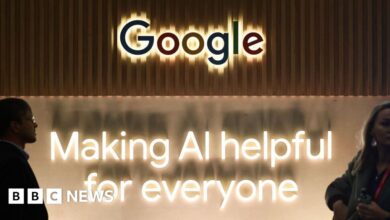Meta’s Llama 3 Model Has Potential to Shake Up AI Landscape

Meta has unveiled the latest iterations of its open-source Llama artificial intelligence (AI) model, which is causing ripples through the AI community.
As the AI arms race continues to heat up, industry experts are closely examining Meta’s Llama 3 model’s capabilities, comparing it to rival offerings from tech giants like Google, OpenAI and Anthropic. With its promise of enhanced performance and accessibility, the Llama 3 model has the potential to reshape the competitive landscape and democratize access to AI.
“Meta’s release of Llama 3, with its advanced capabilities, is poised to set a new benchmark in the open-source generative AI market,” Moses Guttmann, the CEO of the AI firm ClearML, told PYMNTS. “By pushing the limits of what open-source models can achieve, Llama 3 challenges other contributors to elevate their own offerings, accelerating innovation across the board. These latest advancements reaffirm our belief in the potential of open-source AI to rival closed-source alternatives.”
Chatbot Upgrade?
Meta CEO Mark Zuckerberg announced on Threads the launch of the new Llama 3 AI model, which powers Meta AI and is now being integrated across various Meta products, such as Messenger and Instagram, and a dedicated website.
“We’re upgrading Meta AI with our new state-of-the-art Llama 3 AI model, which we’re open sourcing,” Zuckerberg wrote. “With this new model, we believe Meta AI is now the most intelligent AI assistant that you can freely use.”
Zuckerberg announced that the two smaller variants of the Llama 3 model, featuring 8 billion and 70 billion parameters, respectively, have performed well compared to other free models based on standard performance benchmarks used to evaluate model quality. He also noted that the largest version of Llama 3, which contains 400 billion parameters, is still under training.
Llama 3 has been trained on a dataset seven times bigger than its predecessor, Llama 2. In practice, companies prioritize both the quality and diversity of the dataset, not just its size, to receive satisfactory outputs. Nevertheless, the bigger the set of parameters a model is trained on, the more contextual understanding between words it can achieve.
Cloris Chen, CEO of Cogito Finance, discussed with PYMNTS the benchmarks Meta highlighted in its announcement, noting that its included standard industry metrics like MMLU and Meta’s proprietary evaluation tests. The Llama 3 70B Instruct model reportedly outperformed competitors such as GPT-3.5 and Claude Sonnet in these tests. Chen pointed out that this has sparked some debate regarding the objectivity of these tests, although Meta has already responded to these concerns.
One of Llama 3’s key advantages is that it comes in two sizes: small and large models, Austin Vance, the CEO of the digital transformation firm Focused Labs, told PYMTS. He said the small model outperforms the accessible version of OpenAI’s GPT 3.5 Turbo, with faster inference times and the added benefit of being open source.
“This allows enterprises to deploy the model on their own infrastructure using relatively affordable hardware, giving them control over their security environment, data and development workflows without incurring significant costs associated with OpenAI,” he added.
Vance said the larger Llama 3 model is also impressive, outperforming every open-source model to date in terms of information recall, mathematical capabilities, and conversational style. He said recall capability is particularly noteworthy, and the natural conversation flow is a testament to the model’s sophistication.
“With Llama3, Meta has established itself as a counterweight to Google and Microsoft in the open-source AI space, fulfilling the role that Elon Musk had envisioned for OpenAI,” he added.
Mike Finley, the co-founder of AnswerRocket, told PYMNTS that the new Llama model has the equivalent of about 8 billion neurons, on the order of the brains of the largest of parrots. He said that the model appears to have been trained for much longer than its open-source peers.
“Practically, this means that we are closer to having models that can live on edge devices (phones and tablets first, then POS [point of sale] devices and cars, then chip cards and pacemakers),” he added.
Growing Open-Source AI Movement
Guttman emphasized that Meta’s new AI model is compelling evidence that open-source software can rival proprietary or “closed” models in performance and innovation. He highlighted how Meta’s approach to making its AI technologies accessible could challenge the dominance of closed systems.
“Furthermore, as these models become more capable, they encourage more collaborative projects and partnerships within the open-source community, fostering a more vibrant ecosystem,” he added.
Meta is among several companies championing open-source AI software initiatives. Similarly, Elon Musk’s xAI is making waves by open-sourcing its AI chatbot, Grok, which many see as a step that could democratize AI technology and spur innovation in its commercial use.
The Grok model has been made available to X Premium+ subscribers via platforms such as GitHub and BitTorrent. This release aligns with Musk’s broader critique of OpenAI’s lack of transparency, underscored by his legal confrontations with the organization concerning their AI models.
“Llama 3 is a very significant development in the open-source community, among the main reasons being the sole size of the dataset (as in the case of the 70B version),” Chen said. “Though interestingly enough, the 70B Instruct model is almost on par with Google’s Gemini when analyzing individual results across standard benchmarks.”




